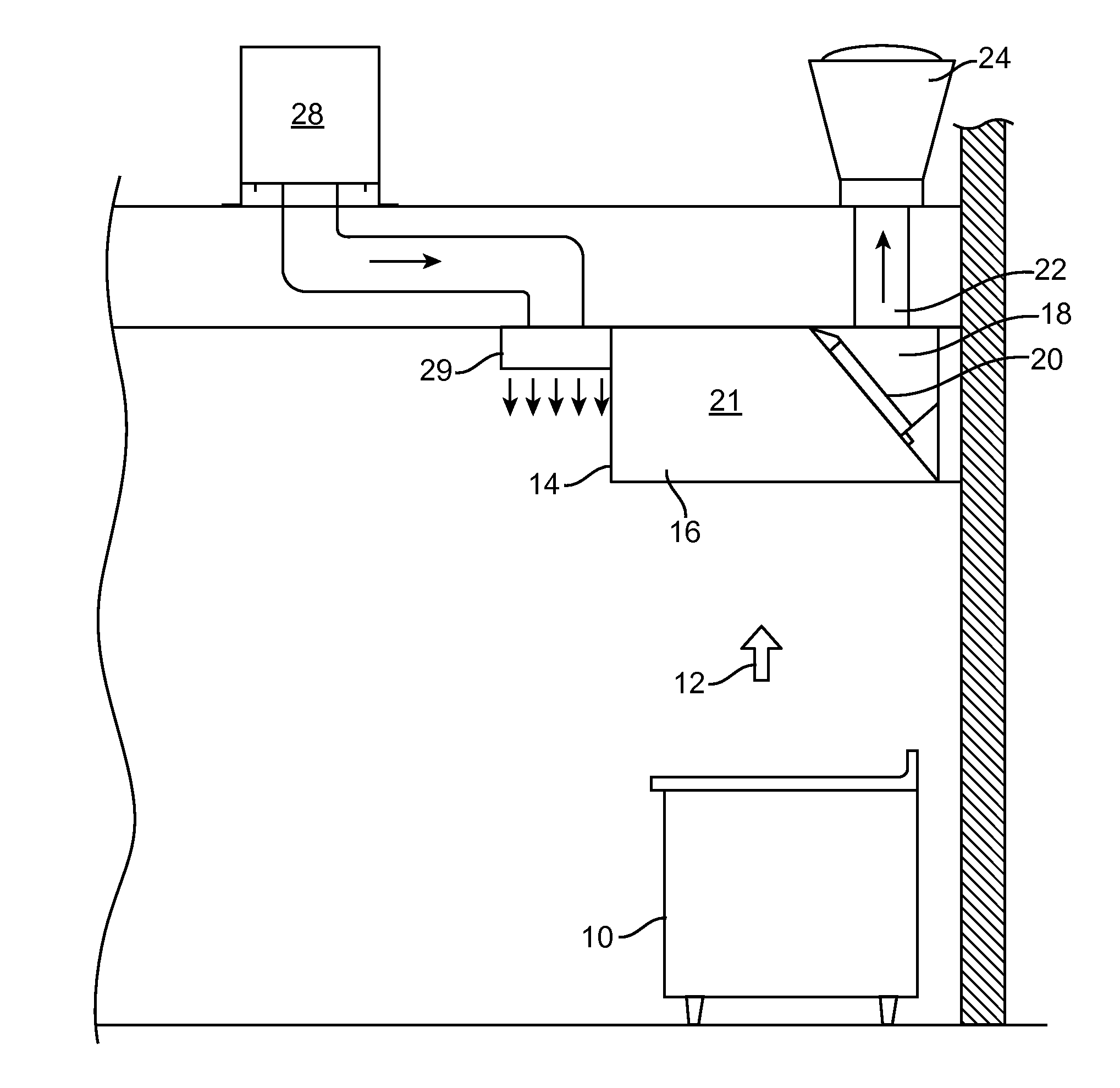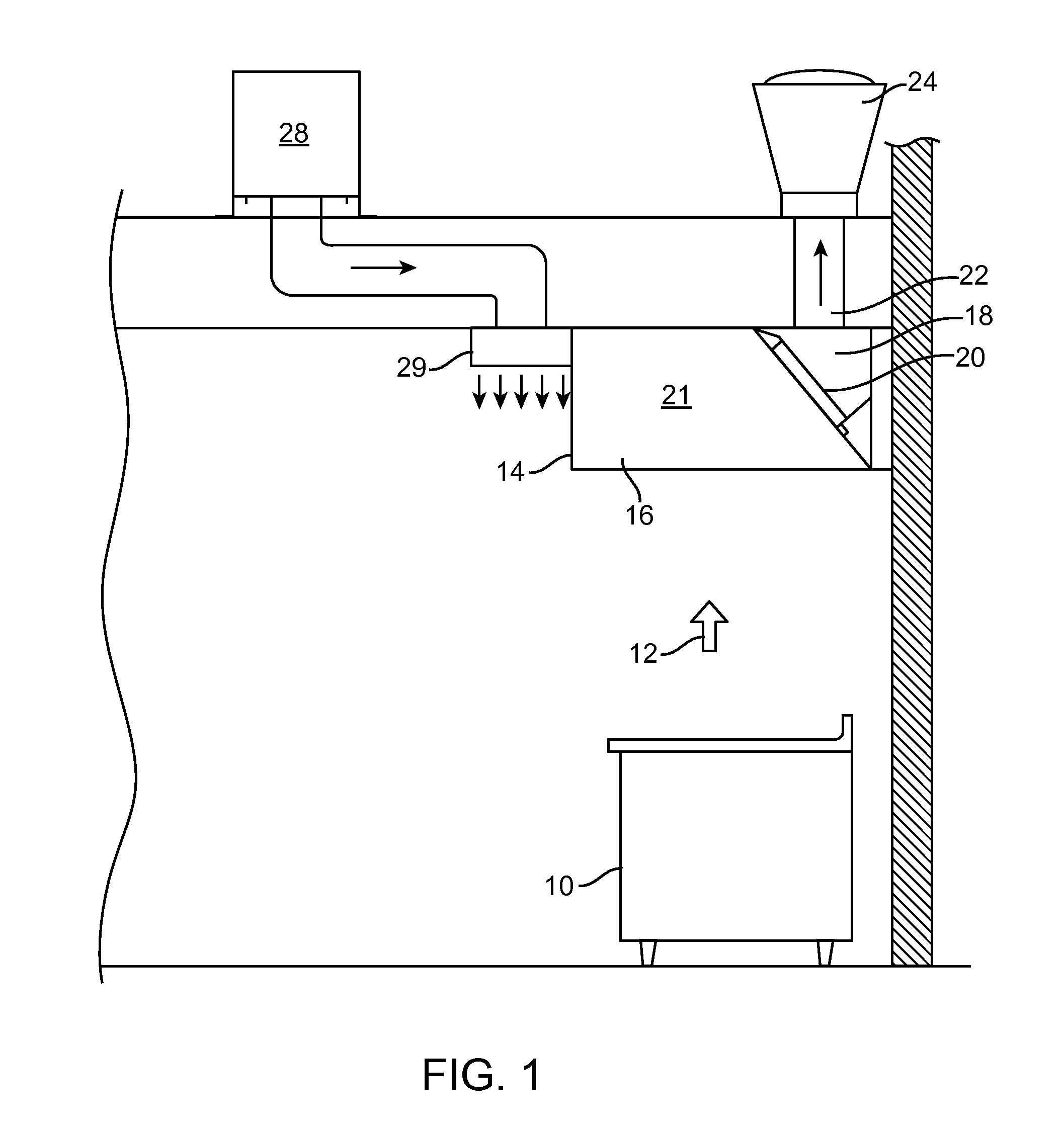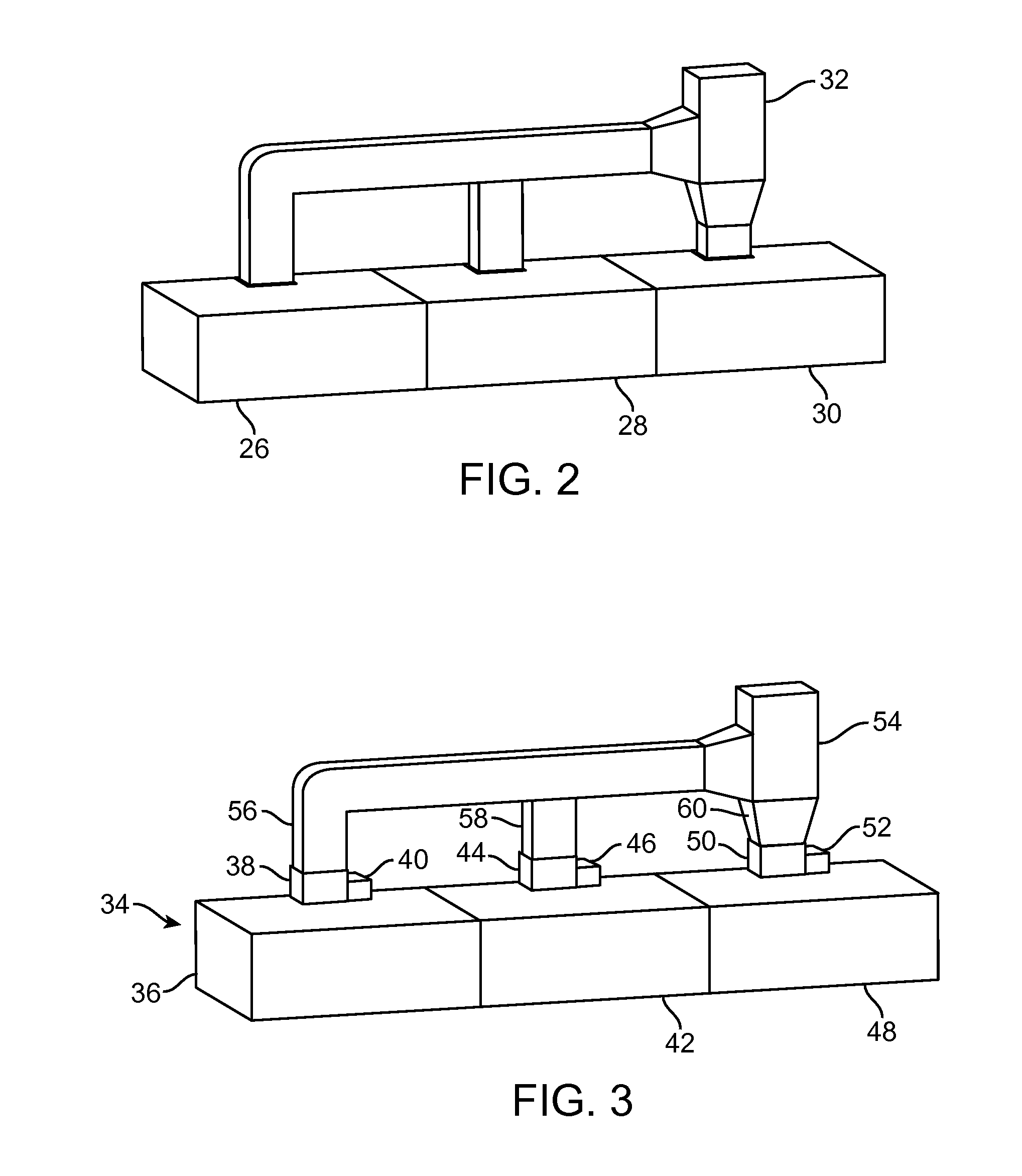Internally Adjustable Damper
a damper and internal adjustment technology, applied in ventilation systems, domestic stoves or ranges, heating types, etc., can solve the problems of reducing the effectiveness of the exhaust system, affecting the working environment of the kitchen, and increasing the flow rate of energy consumption, so as to achieve the effect of selecting resistance to air flow
- Summary
- Abstract
- Description
- Claims
- Application Information
AI Technical Summary
Benefits of technology
Problems solved by technology
Method used
Image
Examples
Embodiment Construction
[0030]FIG. 3 shows pertinent details of a kitchen hood exhaust system 34 that addresses the foregoing issues. The kitchen exhaust system 34 includes a first hood 36 with a first variable volume damper device 38 and a first electronic component enclosure 40 mounted to the first hood 36. It further includes a second hood 42 with a second damper device 44 and second enclosure 46 mounted to the second hood 42, and a third hood 48 with a third damper device 50 and a third enclosure 52 mounted to the third hood 48.
[0031]Each damper device 38, 44, 50 is disposed between its respective kitchen hood 36, 42, 48 and a common exhaust duct 54. Each of the first damper device 38, second damper device 44, and third damper device 50 are connected to a first exhaust duct 56, a second exhaust duct 58, and a third exhaust duct 60, respectively. Each of the first exhaust duct 56, the second exhaust duct 58, and the third exhaust duct 60 are connected to the common exhaust duct 54. A single exhaust fan,...
PUM
 Login to View More
Login to View More Abstract
Description
Claims
Application Information
 Login to View More
Login to View More - R&D
- Intellectual Property
- Life Sciences
- Materials
- Tech Scout
- Unparalleled Data Quality
- Higher Quality Content
- 60% Fewer Hallucinations
Browse by: Latest US Patents, China's latest patents, Technical Efficacy Thesaurus, Application Domain, Technology Topic, Popular Technical Reports.
© 2025 PatSnap. All rights reserved.Legal|Privacy policy|Modern Slavery Act Transparency Statement|Sitemap|About US| Contact US: help@patsnap.com



